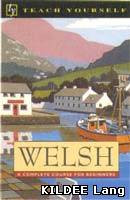Главная » 2009 Январь 8 » Teach Yourself Welsh: T. J. Rhys Jones
08:46 Teach Yourself Welsh: T. J. Rhys Jones | |
 Teach Yourself Welsh
Author: T. J. Rhys Jones Publisher: Hodder and Stoughton Publication date: 1991 ISBN: 0 340 495642 Number of pages: 334 Language: English / Cymraeg Format / Quality: pdf+mp3->rar Size: 157MB Since the early sixties Hodder and Stoughton has published three books for Welsh learners in the 'Teach Yourself' series. The first, Teach Yourself Welsh, was published before the current boom in Welsh teaching and reflected the old-style presentation of the language in its dominantly literary form. The second, published as Teach Yourself Living Welsh in 1977, taught 'Cymraeg Byw,' a colloquially-based form of Welsh intended to give the learner something he or she could use in any Welsh-speaking community. As the author T. J. Rhys Jones stated, his book took advantage of the many exciting developments in language teaching that had occurred since the appearance of the original book. The latest version, also by T. J. Rhys Jones and again called Teach Yourself Welsh, provides a completely rewritten course in line with the style and format of other recent langauge books in the 'Teach Yourself' series. DOWNLOAD | СКАЧАТЬ | |
|
| |
| Всего комментариев: 0 | |